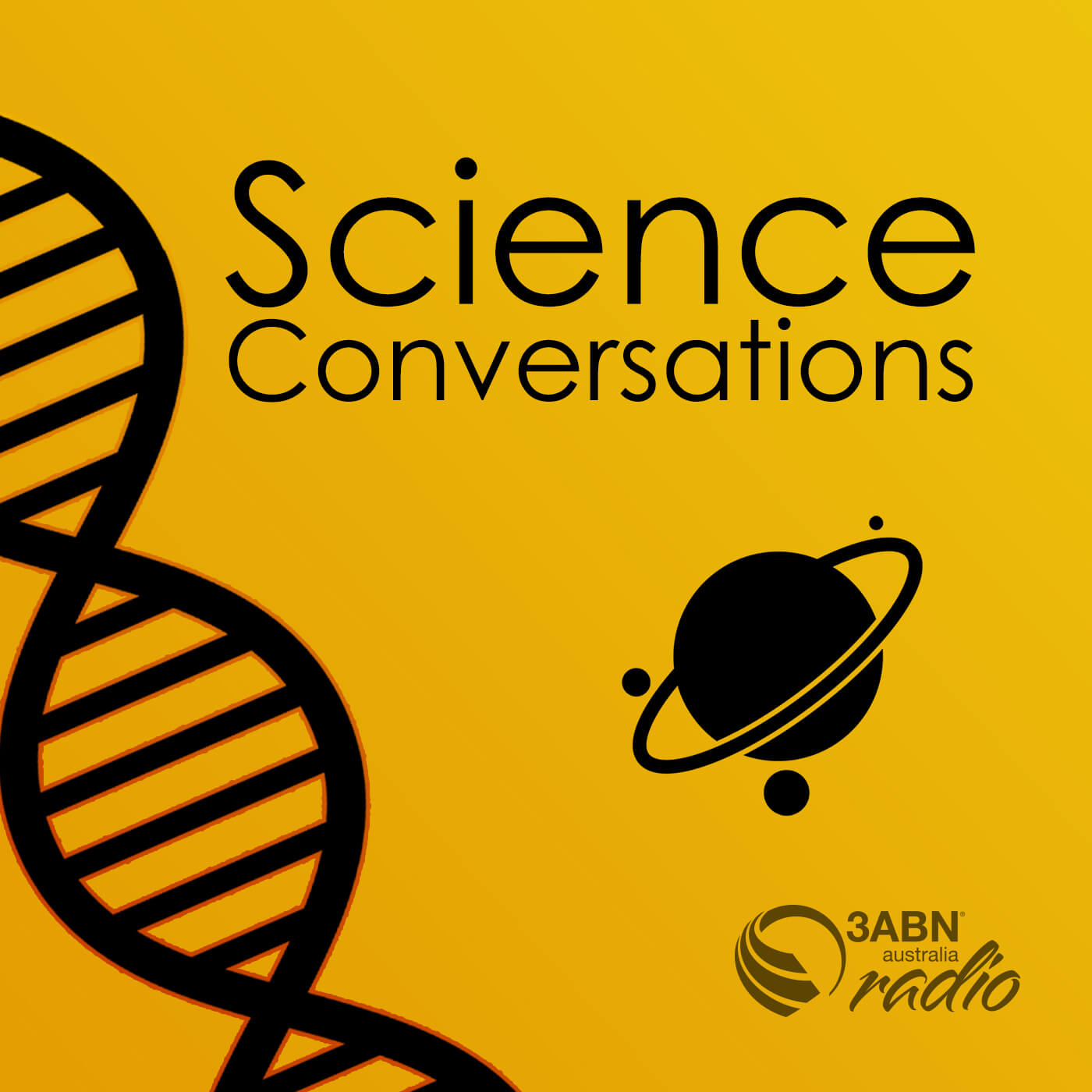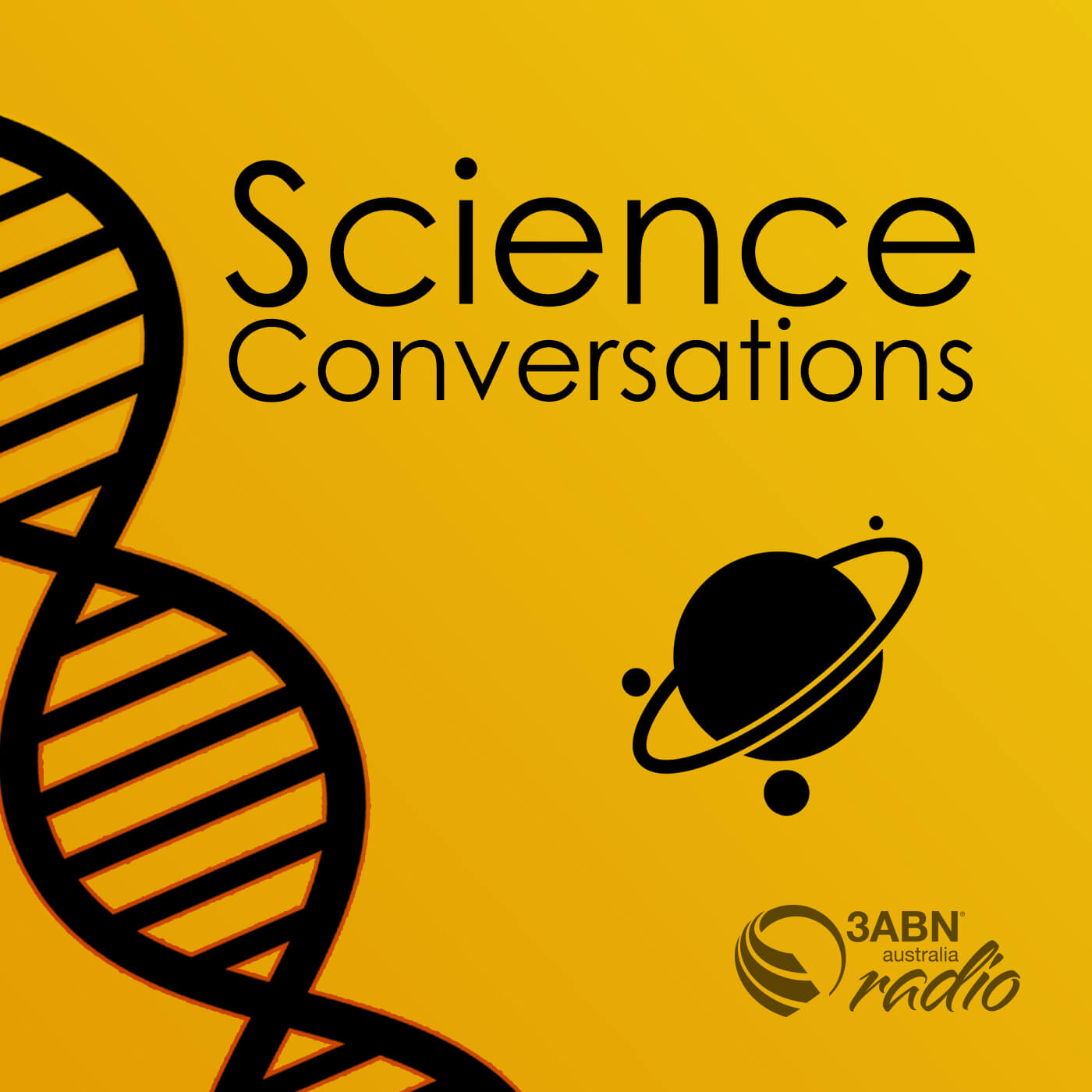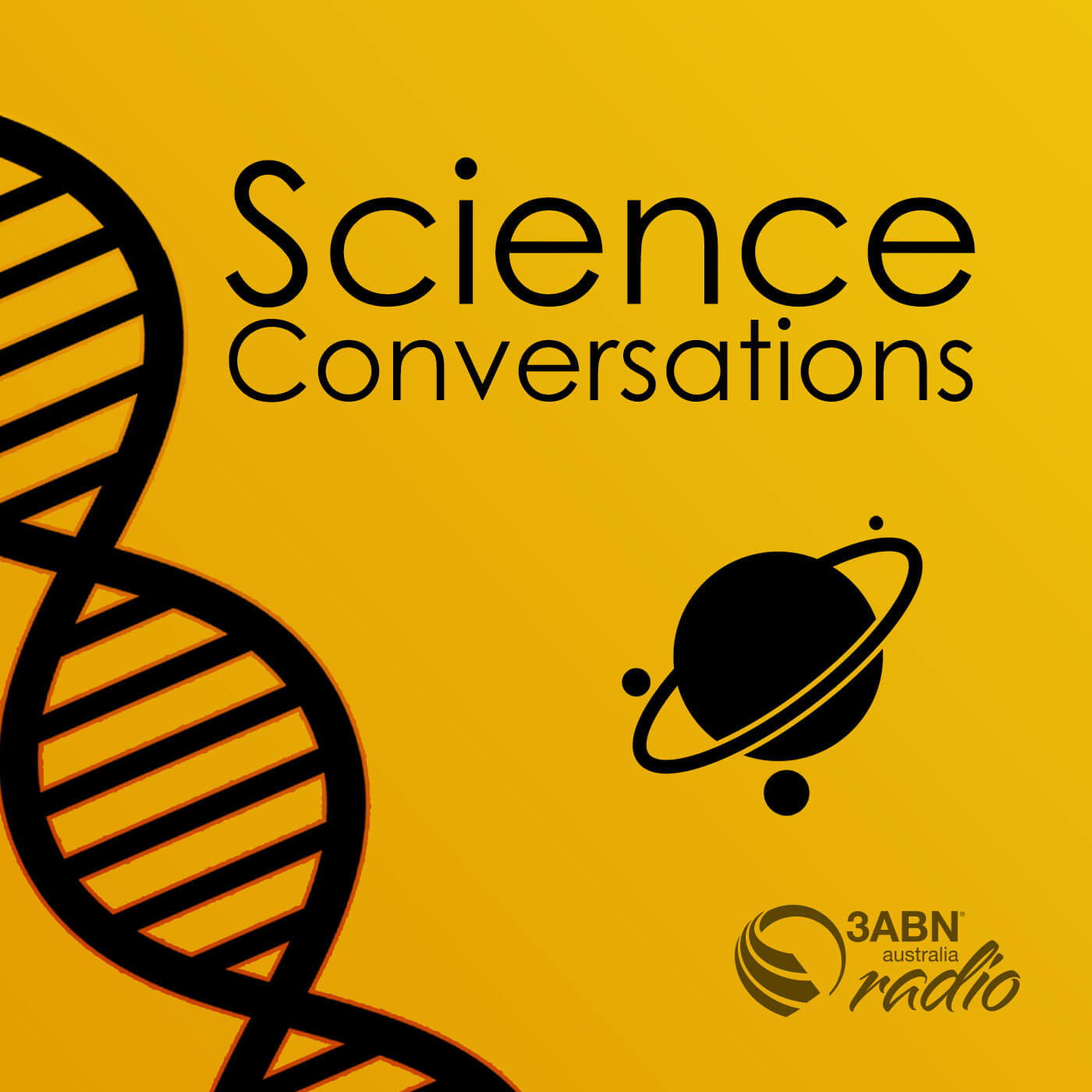Episode Transcript
SPEAKER 1
Welcome to Science Conversations. I'm Kaysie Vokurka. Is there any evidence of fossil intermediates? Joining me to discuss part one of this topic is Dr. John Ashton. Welcome to the program once again, Dr. John.
SPEAKER 2
Hello Kaysie.
SPEAKER 1
We will be talking about Dr. John Ashton's book Evolution Impossible, which is 12 reasons why evolution cannot explain the origin of life on Earth. And we are going to be looking at chapter six today, all about is there evidence for fossil intermediates? So question for you, Dr. John, what do proponents of evolution actually claim the fossil record shows us about fossil intermediates?
SPEAKER 2
Yeah, sure. So essentially, usually they don't talk about fossil intermediates, rather what they say is that the fossil record clearly displays the evolutionary changes that have occurred. over time. And so they say, right, you know, we see this gradual progression in the fossil record of less complex animals to more complex animals as we move up the geological column into more recent fossils. So this is set out as evidence. But when we drill down into this, for example, and a classic example is the transitioning from fish to amphibians. So a lot of the evolutionary models have evolving in the sea and the first life forms being marine type life forms and therefore there was a transition to terrestrial life forms. And so a classic example then that's, you know, cited is that you have the fish with their fins gradually had to move as the lakes or whatever seas dried up they had to move and the ones that could move to another lake or this sort of thing survived better. And so the ones with the stronger fins survived and gradually these changed into legs, this sort of scenario. So this is the picture that's painted. And there's, when you delve into the more, you know, sort of advanced scientific literature, there is a discussion of what they call the intermediate species. In other words, we should see intermediates of these transitions.
SPEAKER 1
Across.
SPEAKER 2
But yes, in actual fact, we don't find an abundance of these intermediates. A few have been, fossils have been found that people have suggested might be intermediates.
SPEAKER 1
That's really interesting because of course if there's going to be intermediates, I mean the scenario that you just explained was about how you've got the fish-like creature becoming into like an amphibian and the fins Wings eventually got strong enough to be limbs. So you would expect to see progressive changes there. And of course, that's going to mean a lot of genetic change, isn't it, for that to occur?
SPEAKER 2
Oh, yes. Huge, huge amount of change. And I think this is a very clear, there's two aspects to this. The fact that we don't usually find intermediates, and we should be finding heaps of them. for all the different types of species, there should be heaps of intermediates. But the other thing I think that many people don't realise is that the genetic changes have to underpin this. So we know that the changes result from mutations in the DNA. So what you've got to have happen is the gamete cell, the male gamete cell, combines with the female gamete cell, and you produce then a new embryo, a new type of organism. Now what has to happen during that combination mutation process is some sort of genetic defect has to occur or change has to occur in the genetic code, which we say produces a mutation. Now, it might be a very, very small change. And what has to happen then over a long period of time is that that particular change has to somehow be propagated in the next offspring. So when that offspring breeds, whether it provides either a male or female gamete cell, somehow that change has to be passed on to the next generation and not corrected for. Now we actually know there's a lot of correction mechanisms built into the DNA replication process. So that's a hurdle that would have to be overcome. Now secondly, we assume that these mutations are only small, have to accumulate over time. So you've got to get these mutant creatures, then you know, mating and producing offspring, and then more mutations occurring, and these mutations somehow synergistic and collaborative and building up. So eventually you build up a process so that you get a totally new organism. Now, as we understand genetics now, that's virtually totally impossible because the amount of information is huge. And if we take the standard fish to amphibian type of scenario where you have the genetic code for the fin, the muscles that produce the fin, the blood vessels that control those muscles, the nerves, and so forth. and the structures, the bone structures that are in the fin itself and so forth. You've got to change that code into something now that produces, say, a pelvic structure with the associated bones, with the associated joints, all the different types of cells that are associated with those joints and the different layers that produce lubrication, the different tendons, muscles, blood vessels, nerves. There's a whole new scenario that has required extremely complex there's a huge amount of code required that all has to work because now you have to support the weight of the animal has to be supported by a pelvic and a shoulder structure presumably. And so it's totally new bone structures. A massive amount of code has to evolve by random mutations that works in the meantime. But the problem is that when we look at the fossil record, we don't find these intermediates gradually developing a pelvic system. We don't find this. So there's a couple of intermediates that have been reported where there might be a similar bone structure and this sort of thing, but the complexity and the differences are huge. Another classic example is where the head of a fish is attached and fixed to its backbone, whereas on an amphibian, the head can obviously swivel and move. It's not connected to the shoulder girdle in a fixed way. So there's a classic change there as well.
SPEAKER 1
And we certainly would expect that if so much of that change did actually occur, we would see that in the fossil record because it's to do with the bone structures and the number of generations that would have to go through to affect that change from a fish to an amphibian, you would surely expect to find something that would demonstrate that change.
SPEAKER 2
Yes, an animal with fins that was developing internally a pelvic bone structure and a shoulder structure, all those sort of things. it would take, one would presume a long time, a very large number of mutations, because the differences are huge. Now we've just looked at a very straightforward, well-known change, but when we think of all the millions of different organisms that we know existed in the past, that are all supposed to have evolved gradually, and we do find, you know, millions of fossils that have actually been found, studied and reported, and we know that there are many more that are out there, but out of all the ones you'd think probability of finding a series, particularly when we find a lot of organisms. So we find, for example, say, beds of nautiloids or beds of particular animals where large numbers have been buried en masse, you'd think in that population as well there would be a high chance of finding fossils with the mutants. But we don't find these intermediates. And it's very interesting that the textbooks claim, of course, that the fossil record is evidence of evolution. but, and they talk about how there, you know, this gradual development, but then they're very quiet on the evidence for the intermediates. Right. They argue over a few in the scientific literature, but they make the sweeping statements, but they don't actually provide any evidence. And the fact is, of course, the intermediates aren't there. And the top evolutionists and geologists recognize that. that the intermediate something.
SPEAKER 1
Now it's interesting, there's a creature, an extinct amphibian called Ichthyostega, if that's how you pronounce it, but it's like a fish-like amphibian. And this one has been pointed to as an example of transitional species. Can you tell us a bit more about that particular example and what it actually shows?
SPEAKER 2
Yeah, sure. So that had, that particular fish, animal. Actually, it turned out to be an amphibian, but it did have some characteristics that were similar to a particular type of extinct primitive fish. There are a few characteristics there, but when we actually look at its taxonomy and so forth, it's quite clearly an amphibian, vertebrate amphibian. So it had a few, and of course it's likely to find a few examples like this. the point is we should be finding millions of these examples. And clearly, if we identified it today and we looked at it, somebody dug it up for the first time, they'd say, oh yeah, that's an amphibian. It's just that it did have some structures that were similar to a prehistoric, now extinct fish in part of its physical structures. But when we look at how we would define that animal today or that particular organism today, it would be clearly an amphibian.
SPEAKER 1
Yeah, that's interesting because I think this blending of different characteristics which we match to certain groups, like I think if we found a fossilized platypus and didn't know that hadn't seen a real one, we might think, oh, this is a transition between, I don't know, some sort of water creature and a duck, right? Because of the bill, you know? So you might think that it's an intermediate species, but actually it's It's a full package, like it's ready to go like it is kind of thing.
SPEAKER 2
And they've been like that too, a long time. We find them in the fossil record, they haven't changed. They're unpalatable.
SPEAKER 1
Yeah, interesting.
SPEAKER 2
And that is certainly an enigma for evolution, in that an egg-laying mammal.
SPEAKER 1
Doesn't quite make sense, does it?
SPEAKER 2
And I think though one of the main points is that the leading evolutionists and people like Richard Dawkins are claiming that we have this evidence, where in actual fact we don't have evidence of clear intermediate species or a series. We would need a series as well, not an odd example, which could be a unique creature in itself. And that's what some of these intermediates, in fact, I think are. They're not actually mutations, they're unique species of themselves that happen to have these characteristics. So for evolution to occur, and sticking to just one of the ones that, for example, Dawkins talks about in his book Evolution: the Greatest Show on Earth. He clearly talks about the transition from fish to amphibians. And this is a series where, okay, there are a huge number of fish species. There are a very large number of amphibian species, and yet we see no clear successive series of changes. And yet there are massive, physiological changes, anatomical changes, between fish and amphibians. And as I said, the clear ones are the fact that the shoulder structure, the pelvic system and legs are attached to the backbone. And so, yeah, so there's overwhelming evidence that we don't have this actual evidence of evolutionary change occurring in the fossil record. It's very strong.
SPEAKER 1
Which means you can't really make a strong case for that theory, can you?
SPEAKER 2
Well, that's right.
SPEAKER 1
You have to have the evidence to back it fully.
SPEAKER 2
Exactly, and the claim that the fossil record provides evidence for evolution is false, and that's clearly been disproved.
SPEAKER 1
Very interesting. There's a lot more we can talk about this topic, and we will. So next time we're going to continue to examine the question, is there any evidence of fossil intermediates? Be sure to join us.


